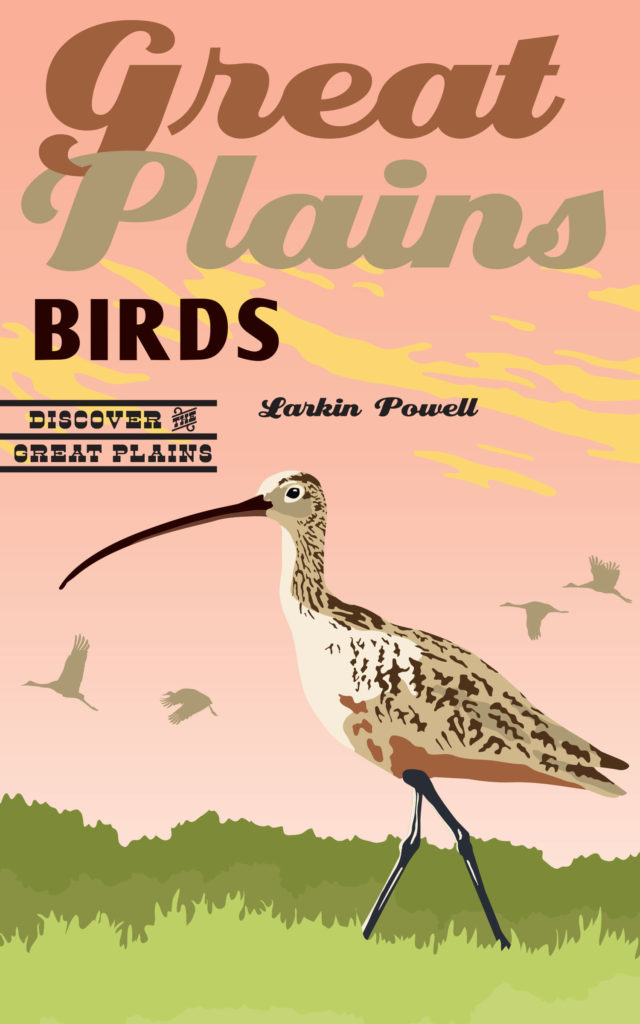Q&A with author Larkin Powell

Larkin Powell, Director of Great Plains Cooperative Ecosystems Study Unit and Professor of Conservation Biology/Animal Ecology, is the author of Great Plains Birds, the next title in the Discover the Great Plains series (out November 2019). Interview by: Center for Great Plains Studies Assistant Director Katie Nieland.
What is Great Plains Birds about?
Great Plains Birds is a quick introduction to the birds of this unique region, their historical and current risks, the unique bird habitats found in the Great Plains, and conservation efforts to support species in a region dominated by agricultural production. The book ends with a section about birding in the Great Plains and where to find birds of interest. The book is not a complete identification guide—we do have something like 92 color photos of birds in the book, but if you get hooked on the birds of the Great Plains, then you’ll need to find an ID guide to use on your outings!
For visitors who are interested in birds, what are some top spots to check out?
The book lists 80 places (typically 7-8 places in each state or province in the Great Plains), and I know we are going to hear from people who are upset their favorite place isn’t on the list. However, a Top 5 set of birding destinations in the Great Plains would probably always include Nebraska’s own Central Platte Valley and Audubon’s Rowe Sanctuary during migration season for spectacular views of large flocks of sandhill cranes and ducks and geese, as well as chances to see endangered whooping cranes and the little shorebirds. For any state in the Great Plains, a super first stop for birding would be any of several National Wildlife Refuges. Of the 80 locations detailed in the book, 24 of them are National Wildlife Refuges. These areas are public lands, meaning we support them as a nation and they are open to the public. Many have impressive visitor centers, and most of them are built around some kind of water body that provides habitat for migratory waterfowl and other water birds. The mission of National Wildlife Refuges is to support migratory birds and endangered species, so getting closer to birds of conservation concern is often possible at a Refuge. In Canada, I would tell people to head towards Delta Marsh in Manitoba as an exceptional wetland system where world-famous research has been conducted on nesting waterfowl.
What is especially different about birds of this region?
the Great Plains has few forests, compared to other regions of the country. Our birds are largely grassland or wetland birds. The Great Plains also acts as one of the four main migratory paths, or flyways, for migratory birds, so “our birds” become a larger set of birds each fall and spring. Grasslands offer few places to hide, which means many of our birds are brown or tan for camouflage. These birds often have unique mating behaviors to ensure they find a mate in wide open spaces.
What do you hope people will take from your book?
First, I hope people will put down the book with an appreciation for the factors that are responsible for the unique set of birds in the Great Plains. I hope they have a better understanding of the habitats they are seeing, if they are driving through the plains. And, I hope they understand the challenges that birds face in our landscapes. And second—I hope people will have a desire to find their own ‘sacred spaces’ with birds in the openness of the Great Plains.
What’s your favorite bird species (and why)?
I’m going to pretend you’re forcing me at risk of death to answer this question, as it’s not practical or possible really to pick just one. But, upon risk of death to choose one, I’m going to pick the eastern kingbird. It’s a songbird, and it is really neat that the eastern and western kingbird bookend the Great Plains, which serves as a transition zone between the two sister species. And, the eastern is just such a regal bird in black and white—it looks like it showed up for a black-tie dinner as it sits on a barbed-wire fence. Behaviorally, they are great fun to watch as they fly out from their perch and hover as they catch insects. They nest high in trees, so they are very impractical a person like me who wants to monitor their nests, but they spend much of their time on fences or telephone wires or bare tree branches—visible places where we can watch them.
